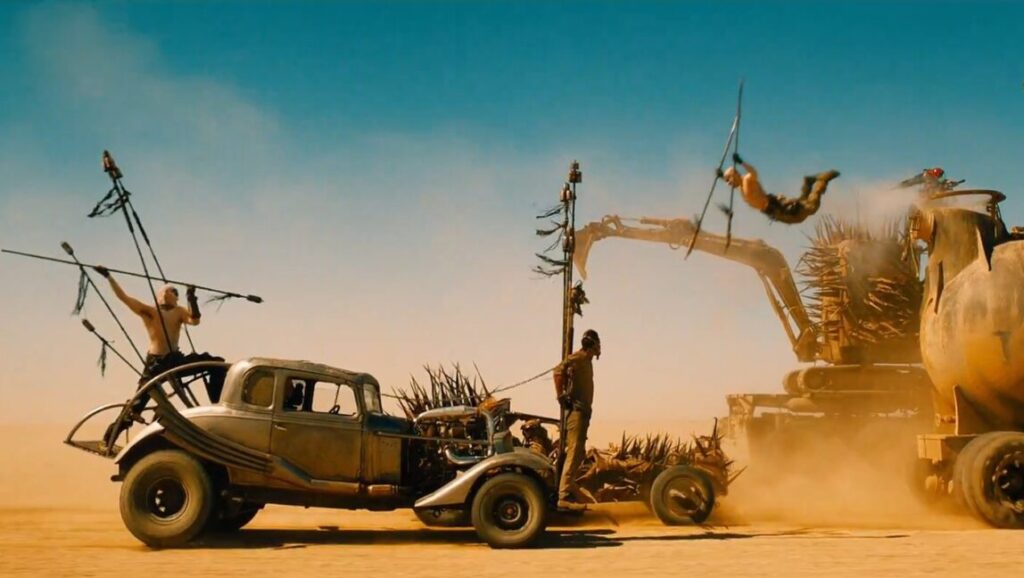By the time of Mad Max Beyond Thunderdome, the third entry in George Miller’s original scorched-Earth trilogy, society had begun to rebuild itself, but the post-apocalypse capitalism of Bartertown, a stronghold in the wastelands governed by gladiatorial combat, was even worse than that of the destroyed world it replaced. Civilization was making a comeback…and it sucked. Mad Max: Fury Road shows us that things haven’t improved since. The world’s holdouts, mostly disfigured by radiation exposure, have gathered in The Citadel, ruled by Immortan Joe, a decrepit megalomaniac who controls all resources, including not just water and gas (amusingly pronounced “guzzoline”), but women, whom he enslaves to “manufacture” breast milk and as a personal harem. When one of his generals, the robot-armed Imperator Furiosa (Charlize Theron) makes a last-ditch attempt to abscond with the madman’s “breeders” and make it to some semblance of safety, Joe’s army pursues, leading to essentially a 95-minute car chase. Mad Max himself (Tom Hardy) is practically a supporting character here, spending the first third of the film as a living plasma IV for one of Joe’s warriors. Eventually, he teams up with Furiosa, whose ambitions ultimately replace his own masculine Joseph Campbell-inspired legacy with one in which capital and property are demolished and Woman inherits the Earth.
This is work not just of a filmmaker who’s embraced every tool at his disposal, but a master who knows exactly when to deploy them.
Throughout, Miller shows that he is still one of the unparalleled masters of action craft. Dozens upon dozens of lovingly production-designed jerry-rigged armored vehicles race across the desert, guys on motorbikes drop grenades in mid-sweet jump, and pole-vaulters snatch guys off the top of speeding tanker trucks. Painstakingly storyboarded during a pre-production process that stretched over years, not a single shot feels out of place. Miller insists on frame-centering every important object or focal point, and makes sparing use of multiple-camera coverage, so that every cut (and this is a very quick-cut film) feels seamless. What’s more, despite the press materials emphasis on the (truly incredible) practical effects and stuntwork, this is no old-school lament for the days before CGI. Nearly every shot has been embellished, either with flying digital stuntmen and explosions, or wildly impressionistic color saturation. This is work not just of a filmmaker who’s embraced every tool at his disposal, but a master who knows exactly when to deploy them. Even though it’s the fourth film in its series, Fury Road contains no tease for a sequel, no franchise crossover material, and barely any exposition. In the age of 15-film crossover franchises (not that they don’t have their pleasures), it’s the purest movie to come around in ages.

